Cross-border e-commerce "accelerates" and opens a "new track". China’s foreign trade growth has ushered in a new engine and new potential.
CCTV News:Statistics from the General Administration of Customs show that in the first half of this year, China’s cross-border e-commerce increased by 10.5% year-on-year, which has become a new engine and new potential for China’s foreign trade growth.
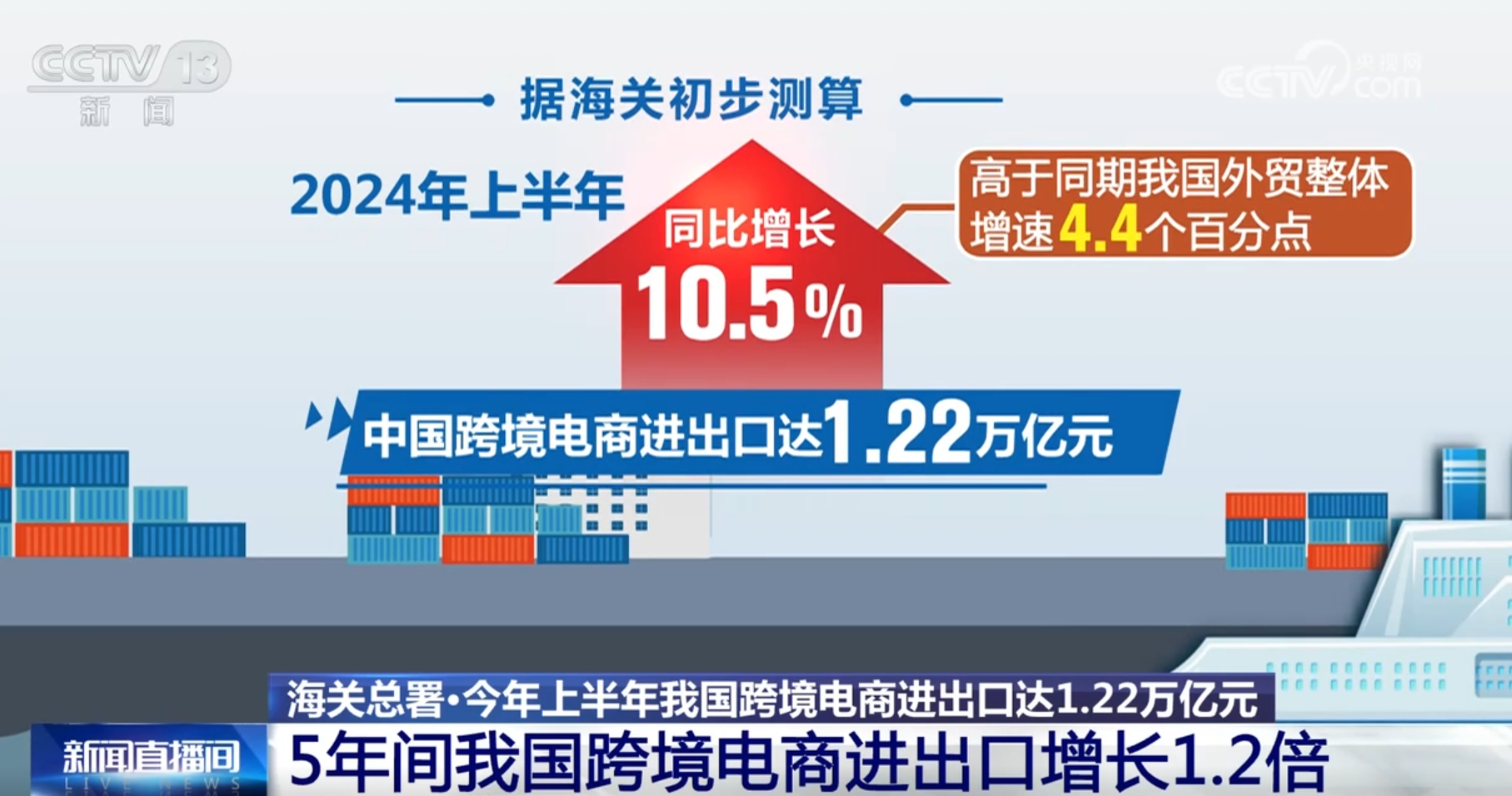
According to the preliminary calculation of the Customs, in the first half of 2024, the import and export of cross-border e-commerce in China reached 1.22 trillion yuan, a year-on-year increase of 10.5%; It is 4.4 percentage points higher than the overall growth rate of China’s foreign trade in the same period. From 1.06 trillion yuan in 2018 to 2.38 trillion yuan in 2023, the import and export of cross-border e-commerce in China has increased by 1.2 times in five years.
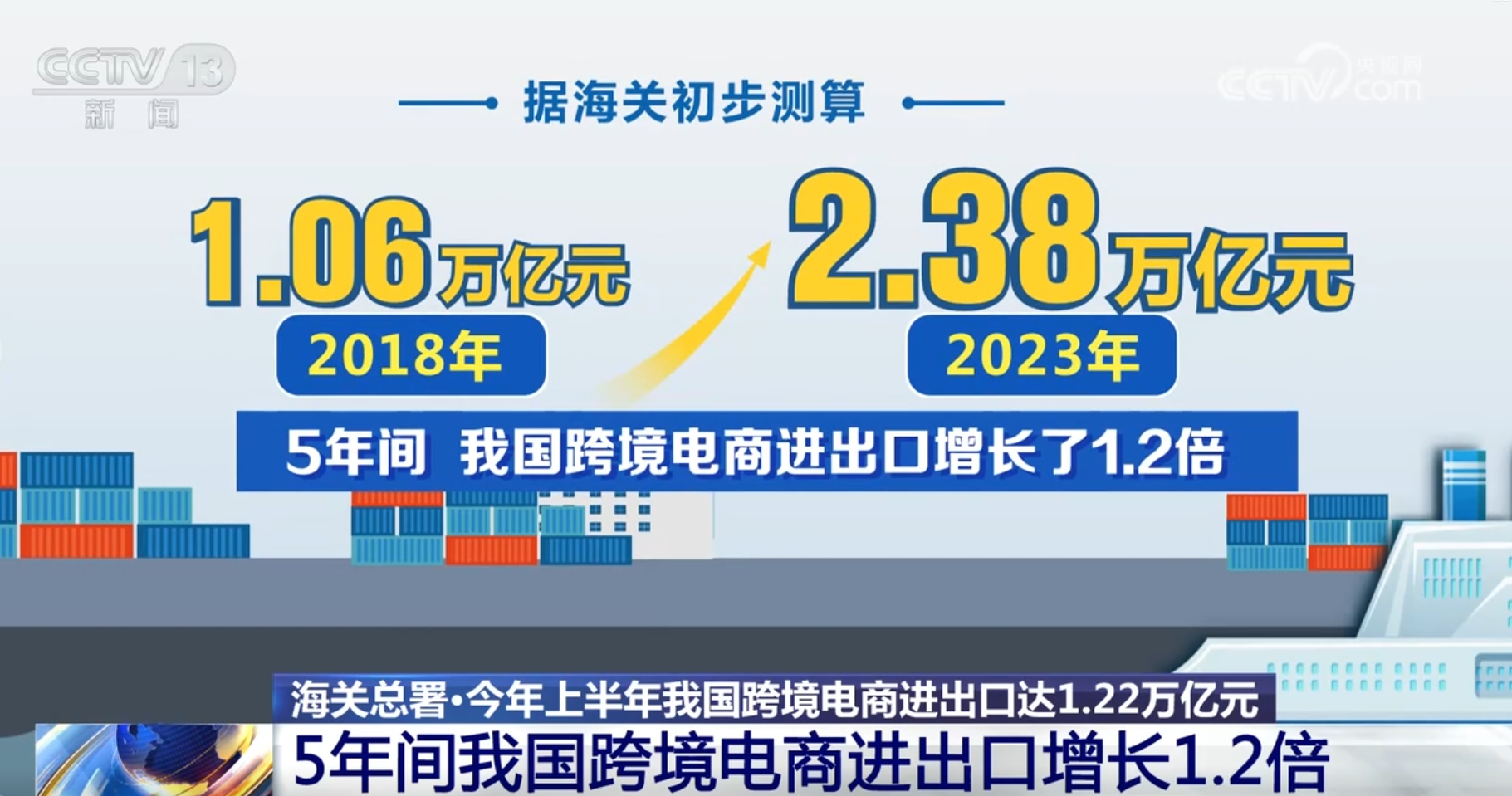
China’s cross-border e-commerce is booming. In 2023, there were more than 7 billion cross-border e-commerce and cross-border mail express shipments under customs supervision, with an average of about 20 million pieces per day. In this regard, the customs has continuously innovated its supervision methods, developed and applied a cross-border e-commerce import and export supervision system, and made efforts to improve the efficiency of cross-border e-commerce customs clearance. At the same time, take a series of measures to ensure that it can be connected quickly and managed.
Guangzhou: Innovative export pooling mode Cross-border e-commerce ran out of "acceleration"
Nowadays, cross-border e-commerce has become a new trade bridge that directly links global consumers and producers, and everyone can participate. Domestic consumers watch the live broadcast with goods on the short video platform, and they can drink red wine from France as soon as possible after placing an order; Foreign consumers can put on the latest fashions from China in just two or three days with a click of the mouse on the e-commerce platform.
As a "Millennium Capital", Guangzhou has advantages in logistics, warehousing and goods categories, attracting more than 1,000 cross-border e-commerce enterprises to do business in Guangzhou, forming a complete cross-border e-commerce ecosystem from preferential policies and platform agglomeration to convenient logistics and financial innovation.
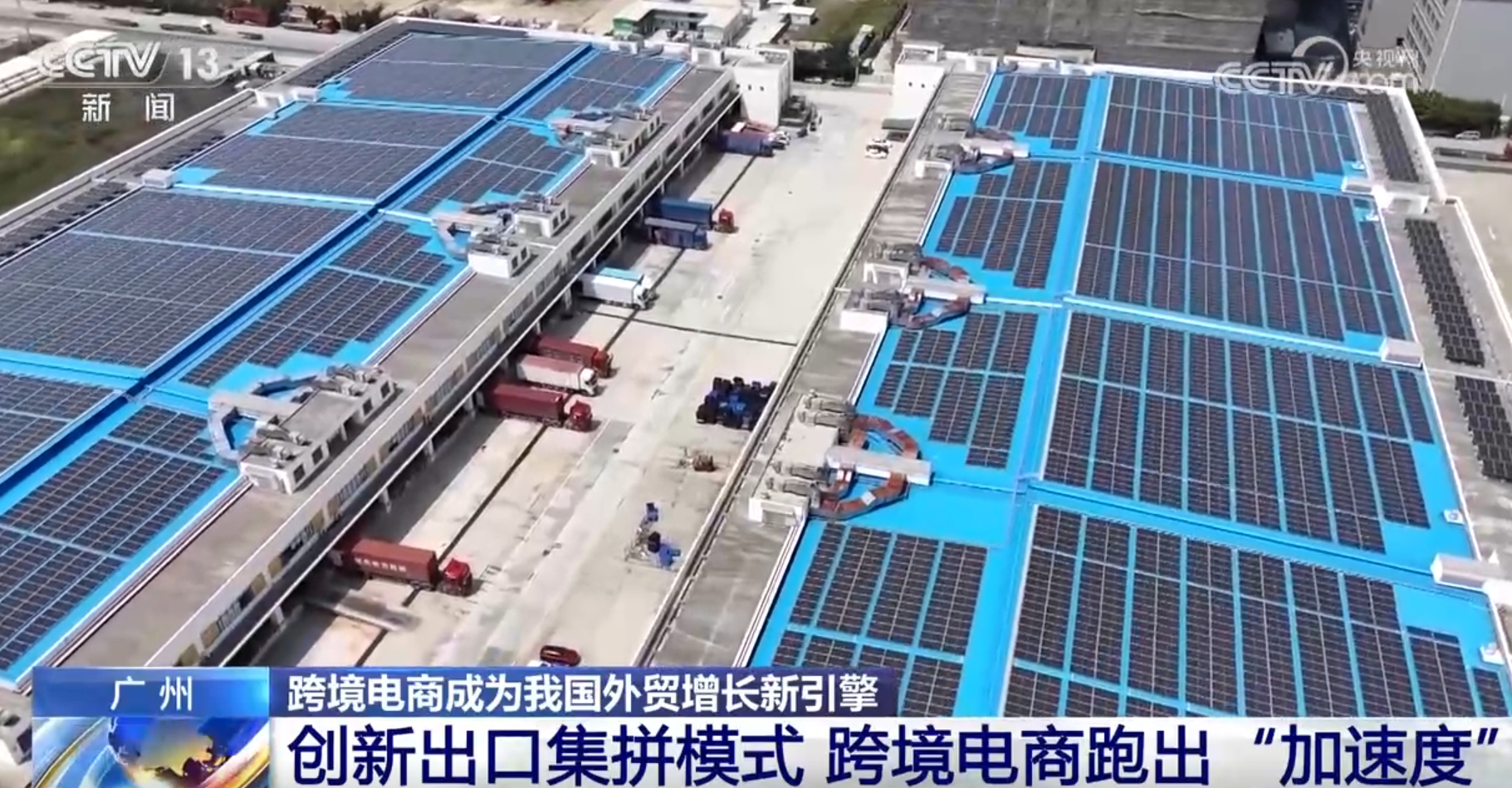
Entering the Nansha Comprehensive Bonded Zone, which is located in the south of Guangzhou and the geographical center of Guangdong-Hong Kong-Macao Greater Bay Area, more than 100 kinds of goods are being put on shelves in an orderly manner in the warehouses of cross-border e-commerce enterprises, thousands of packages are slipping from the conveyor belt, and the staff are skillfully packing and loading cars.
Zhang Yuyuan, a four-level researcher at Guangzhou Customs Postal Supervision Office, said: "At present, the cross-border e-commerce retail imports in Guangzhou are mainly food, cosmetics, leather products, etc., involving 1075 tax codes and 163 import countries and regions, covering five continents."
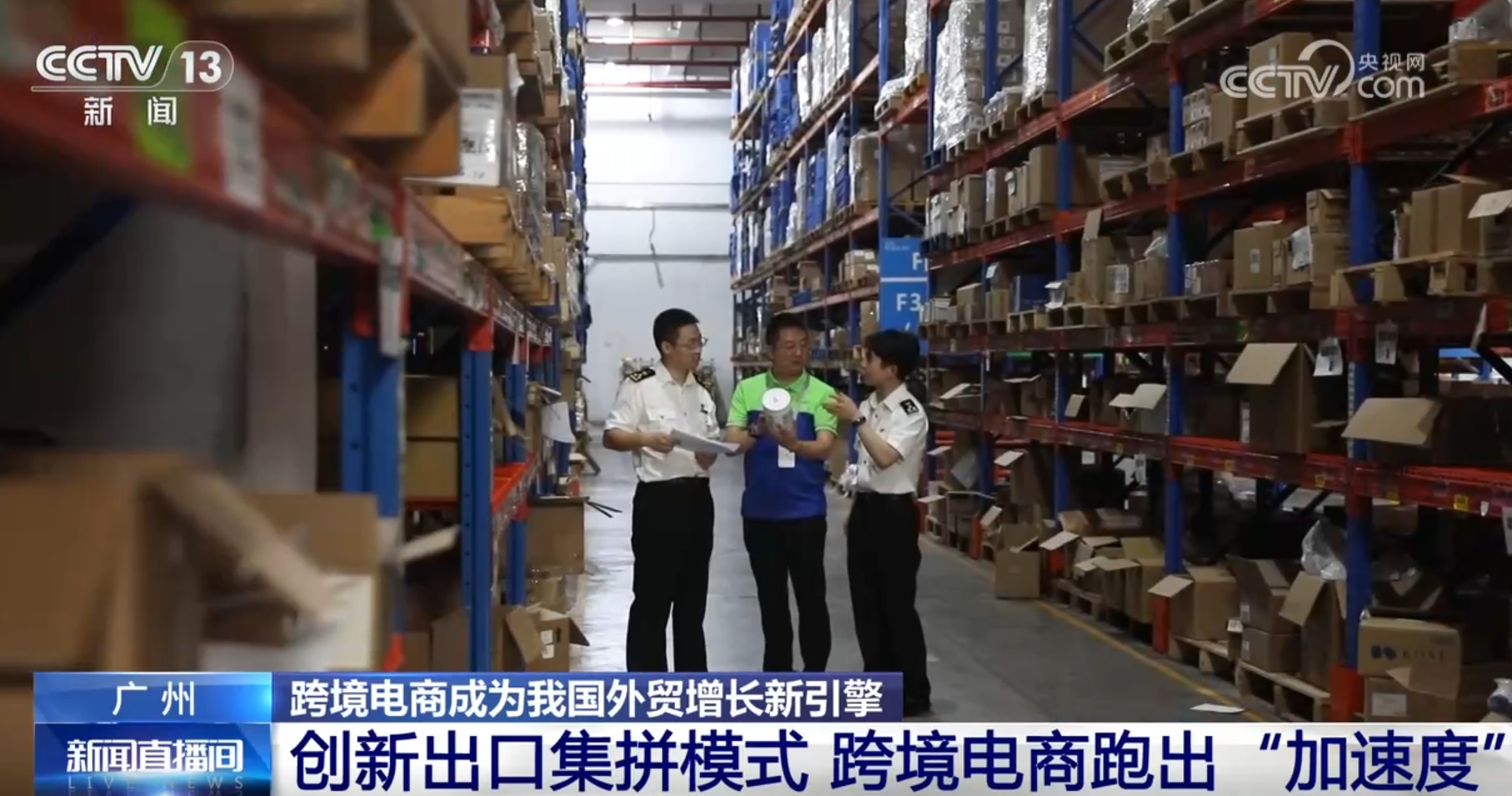
Enterprises develop in "selling the world" and consumers benefit from "buying the world". In recent years, cross-border e-commerce imports have become more and more abundant. Hot-selling goods such as household dishwashers, video game equipment, ski equipment, beer and fitness equipment have been added to the list of cross-border e-commerce retail imports, and the tax number of the listed goods has reached 1474.
Zhang Yuyuan introduced: "At present, Guangzhou’s cross-border e-commerce industry has three characteristics: First, the import demand is large, and the import scale has remained the first in the country for nine consecutive years since 2015. In the first seven months of this year, the value of cross-border e-commerce imports in Guangzhou reached 16.22 billion yuan, a year-on-year increase of 6.7%, involving more than 23.7 million consumers. Second, the proportion of imported mainstream e-commerce platforms continues to increase. Third, the types of goods are still dominated by consumer goods. "
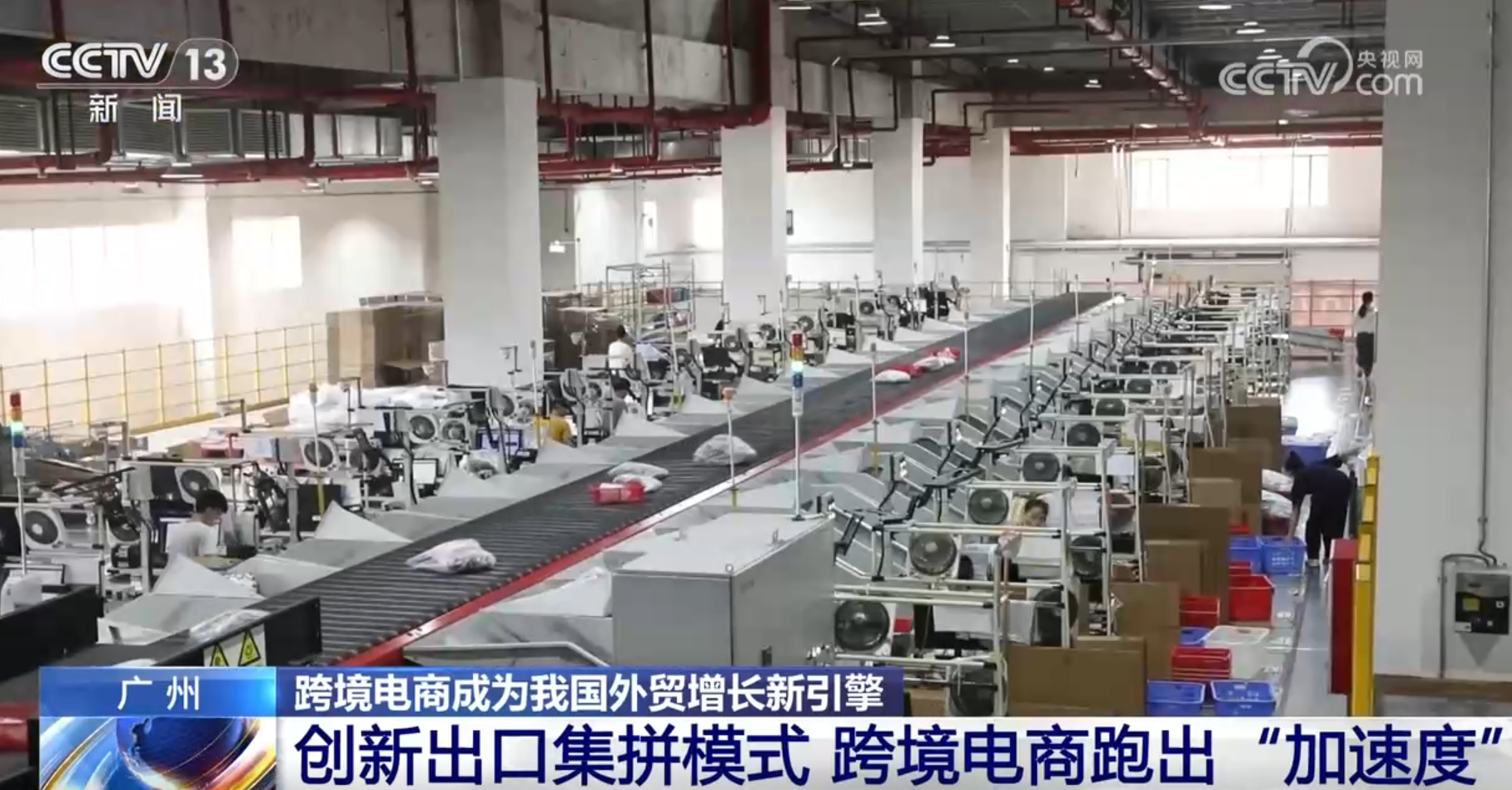
With the rise of "Made in China" and the rapid development of cross-border e-commerce exports, the online ordering and consumption patterns of "fast fashion" retail goods such as domestic fashion clothes and clothing bags are widely favored by overseas consumers. However, online shopping for fast-selling goods often needs to be returned due to the mismatch of sizes and consumers’ dissatisfaction with the wearing effect. The problem of "difficult return" in cross-border online shopping has once become a difficult problem for consumers and cross-border export enterprises.
Li Qi, deputy section chief of Nansha Customs Cross-border E-commerce Supervision Section under Guangzhou Customs, said: "Unpacking, sorting, shelving, storage and re-export are completed in one stop in the warehouse of the comprehensive bonded area, and enterprises are also supported to store the goods returned overseas in the same warehouse as the goods exported by cross-border e-commerce. ‘ Turnkey ’ Distribution and container transportation not only reduce the cost of setting up return warehouses overseas, but also save management and logistics costs for enterprises and further improve the cross-border e-commerce export industrial chain. "

Relying on the export return policy of cross-border e-commerce special areas, cross-border e-commerce export enterprises can also integrate logistics warehousing and management teams inside and outside the special customs supervision areas into the same warehouse operation, so as to reduce the logistics management cost of consolidated export commodities by 30%. In the first seven months of this year, the cross-border e-commerce export consolidation project in the special customs supervision area of Guangzhou Customs delivered nearly 50 million parcels, and related enterprises saved nearly 1.25 billion yuan in international logistics and transportation costs.
Since the centralized mode of cross-border e-commerce export in the special customs supervision area has landed, it has attracted many leading cross-border e-commerce export enterprises to enter the area to carry out related business. In the first seven months of this year, the import and export value of cross-border e-commerce export in the special supervision area of Guangzhou Customs exceeded 20 billion yuan, a year-on-year increase of nearly five times. The warehouse area in the comprehensive bonded area was 330,000 square meters, which led to more than 3,000 jobs.
Shandong: "Summer Economy" Hot Cross-border E-commerce New Track
In the scorching sun, "summer products" have become hot commodities snapped up by foreign consumers, and the export volume of cross-border e-commerce seasonal commodities has increased significantly, adding new vitality to China’s foreign trade.
A few days ago, in the cross-border e-commerce supervision center of Yantai Comprehensive Bonded Zone, 24 container vehicles drove out of the customs supervision bayonet one after another, loaded with seasonal products such as "cool summer clothes", "sunscreen" and "outdoor products", and will soon be sent to South Korea by liner. This summer, foreign consumers snapped up "Made in China" in succession, and the number of packages exported by cross-border e-commerce increased significantly.
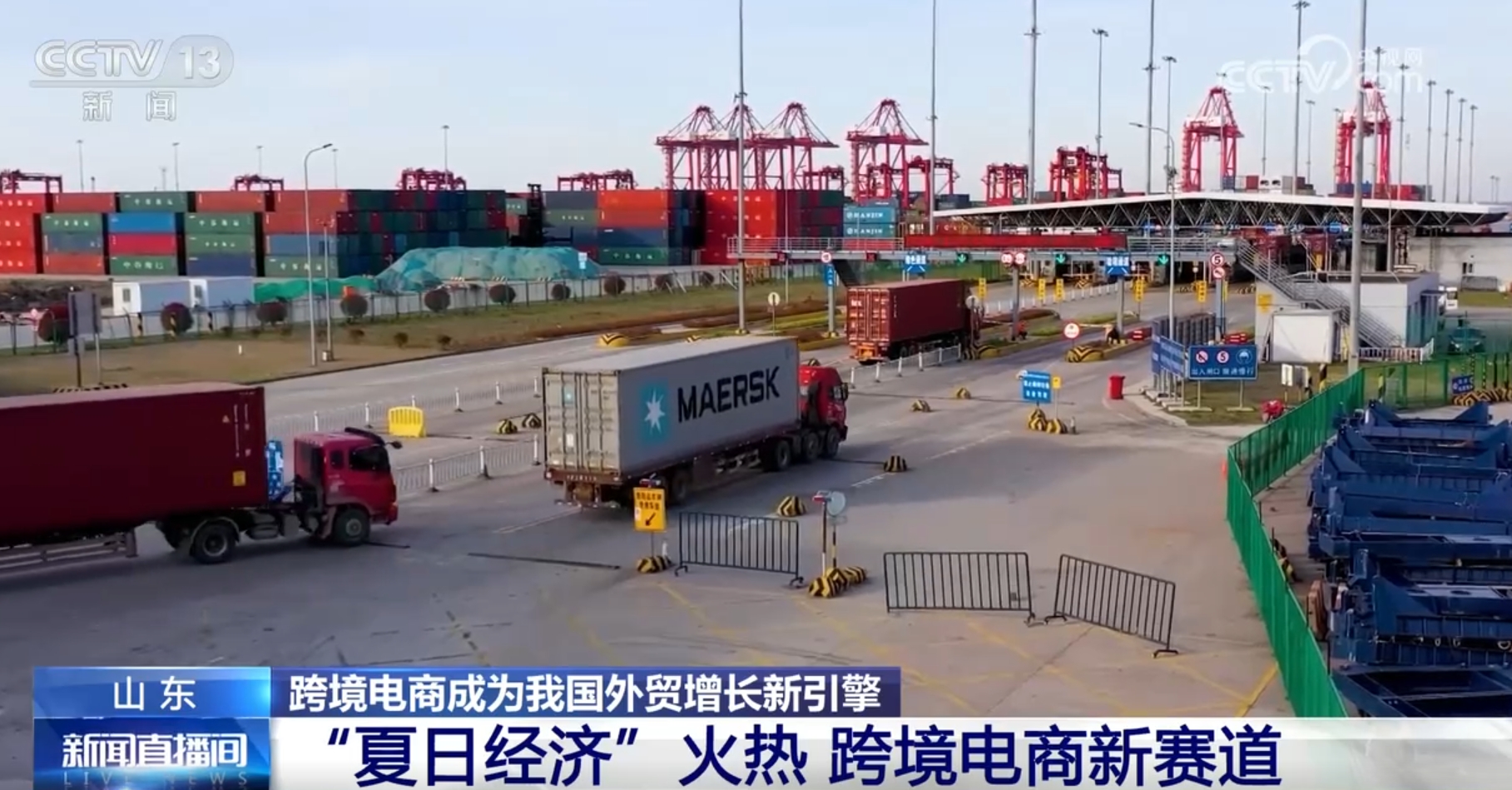
Zhan Xiao Bin, general manager of the supply chain company, said: "At present, the sales of summer commodities on major e-commerce platforms are booming, and the volume of goods in places has increased greatly, with an average daily shipment of nearly 100,000 orders and an average daily turnover of 20 container trucks. In July this year, we have exported 2.15 million cross-border e-commerce orders to Korea, with a value of more than 43 million US dollars, up 13.7% year-on-year. In August this year, we expect to exceed 2.2 million orders. "
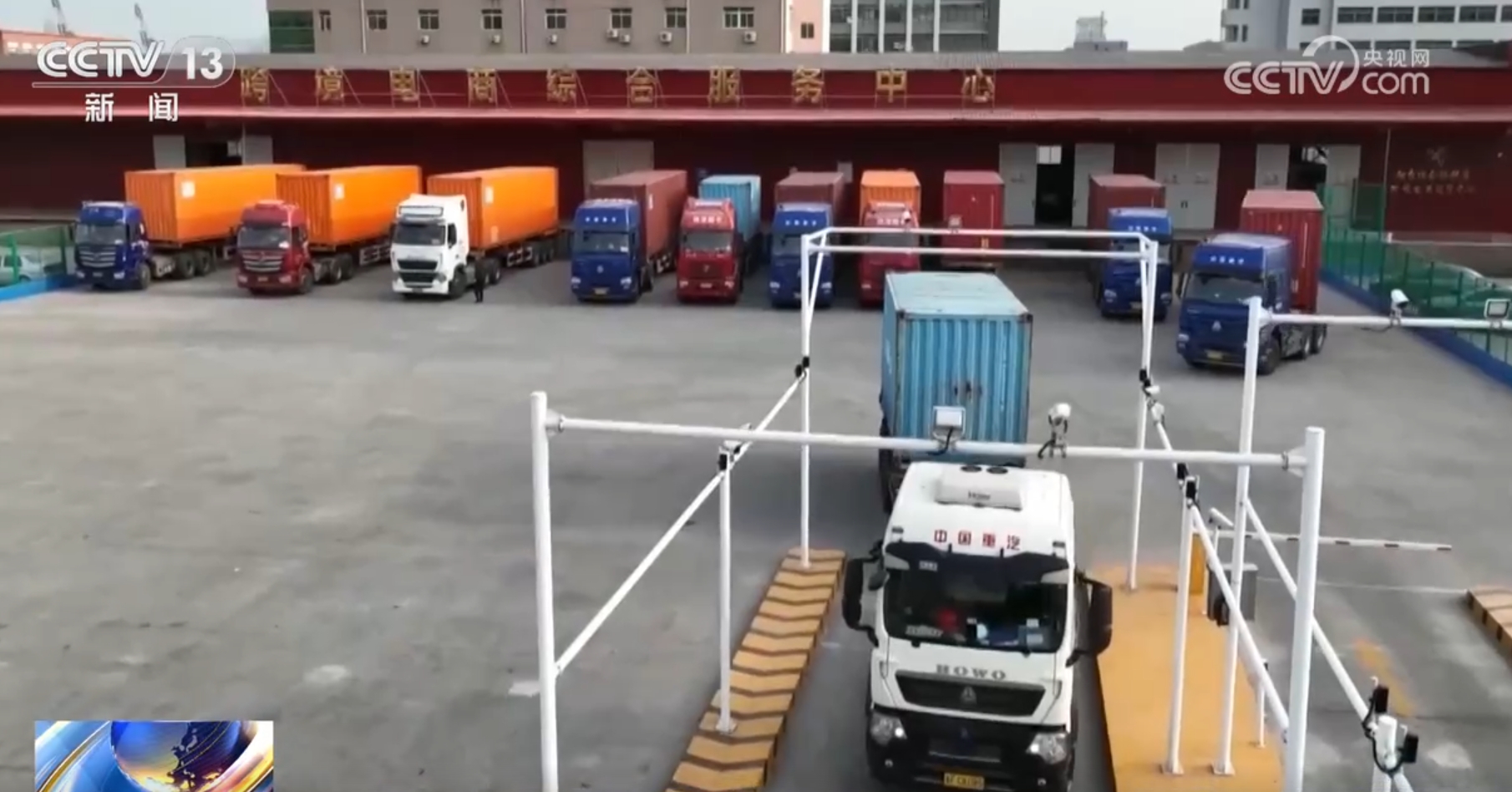
While the volume of export orders has increased substantially, the timeliness requirements of cross-border e-commerce have also improved significantly. Customs and other departments have strengthened the support of scientific and technological equipment, improved the port operation and customs clearance inspection capabilities, and ensured that e-commerce products can go to sea quickly in season.
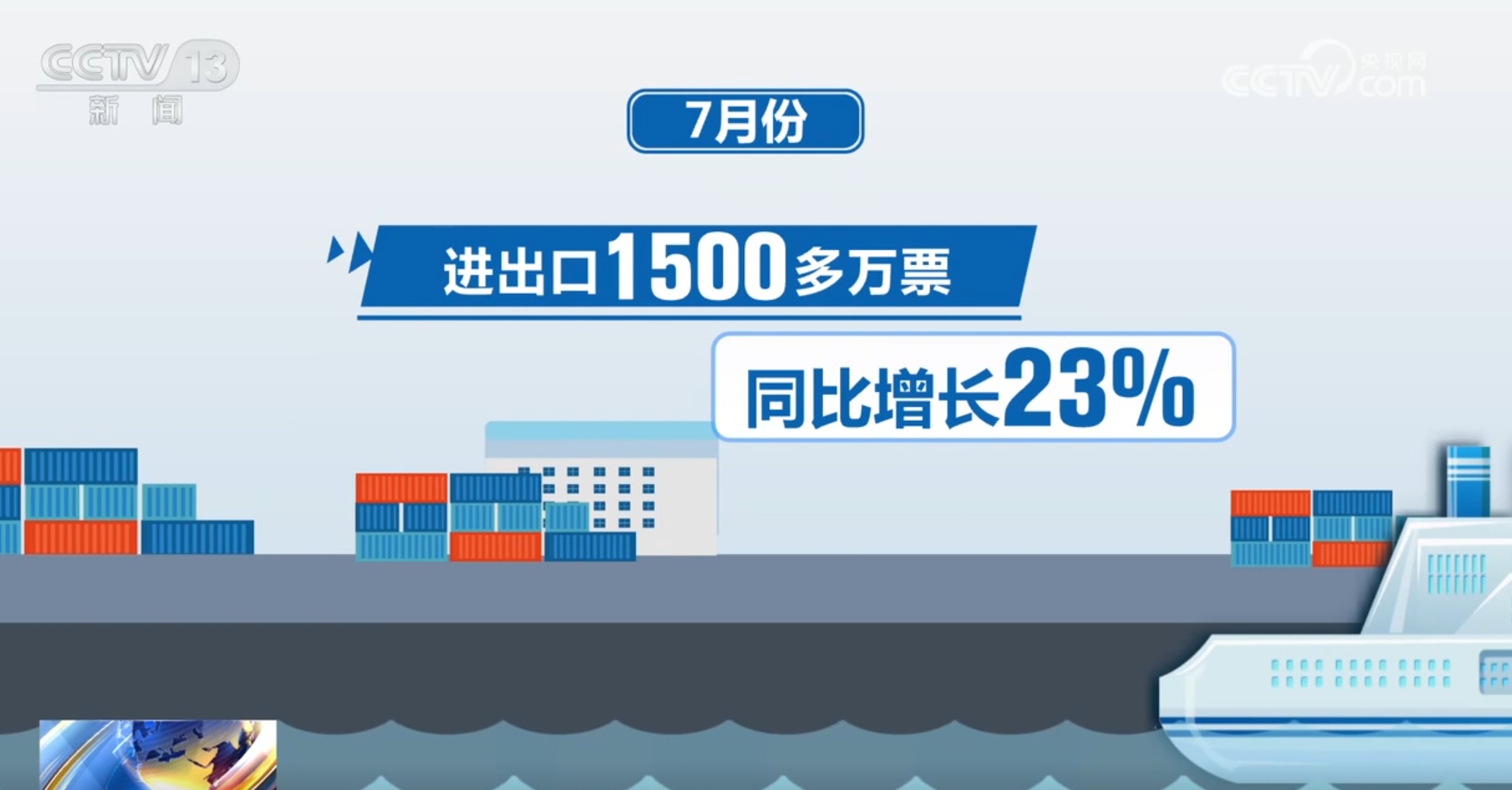
In the first seven months of 2024, Qingdao Customs supervised the import and export of cross-border e-commerce by more than 97 million votes, a year-on-year increase of 26%; Among them, more than 15 million votes were imported and exported in July, a year-on-year increase of 23%.
Zhejiang: Exports of sporting goods increased by 26.9% in the first seven months.
In this summer, from the European Cup to the Olympic Games, from sports equipment to peripheral products, a large number of "Made in Zhejiang" figures are active in the field of sports economy brought by large-scale events. Cross-border e-commerce, as one of the highlights of Zhejiang’s foreign trade, has also become a "new track" for "Made in Zhejiang" exports.
Xu Xiaobing, the statistics and analysis department of Yiwu Customs under Hangzhou Customs, said that with the holding of international sports events such as the European Cup and the Olympic Games, the export of sporting goods in Yiwu ushered in a "big year" this year. 1— In July, Yiwu exported 5.81 billion yuan of sporting goods and equipment, a year-on-year increase of 37.8%.
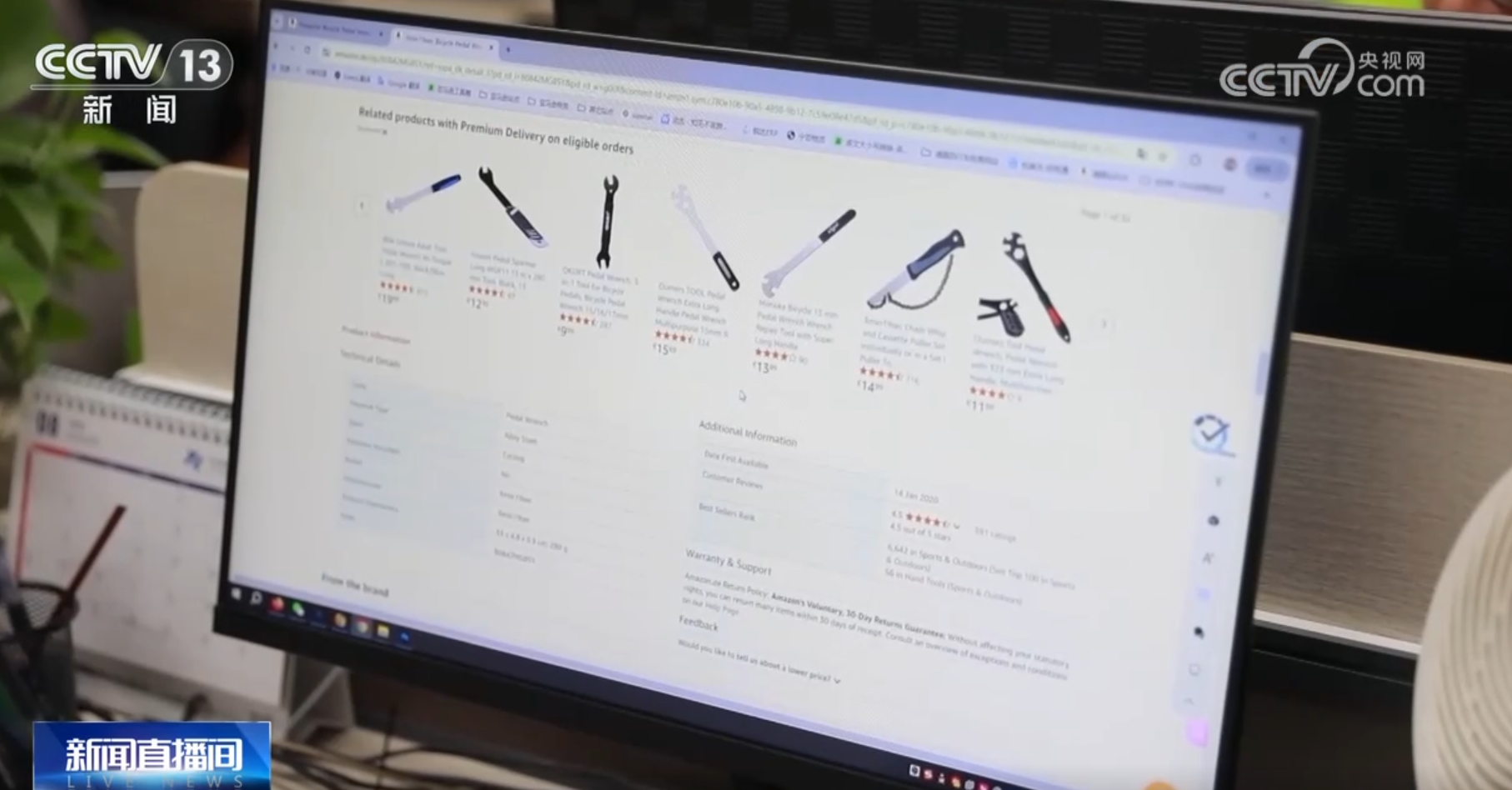
Zhejiang e-commerce enterprises can seize the business opportunity of "event economy" without the mature industrial chain formed by the first-Mover advantage of Zhejiang cross-border e-commerce industry and the efficient logistics network. In the first cross-border e-commerce comprehensive experimental zone in China, batches of cross-border e-commerce retail export commodities have arrived at the customs supervision place of Hangzhou Bonded Logistics Center. After rapid customs supervision and release, these cross-border e-commerce commodities will be freely exported through five airport ports in the Yangtze River Delta region, including Hangzhou Xiaoshan International Airport and Shanghai Pudong Airport, according to the capacity of freight flights.
Chen Min, customs manager of international freight forwarding company, said: "Generally speaking, after overseas consumers place orders on cross-border platforms, 5-mdash; You can receive goods from domestic sellers within 7 days, which also encourages more overseas consumers to choose domestic e-commerce companies to place orders. "
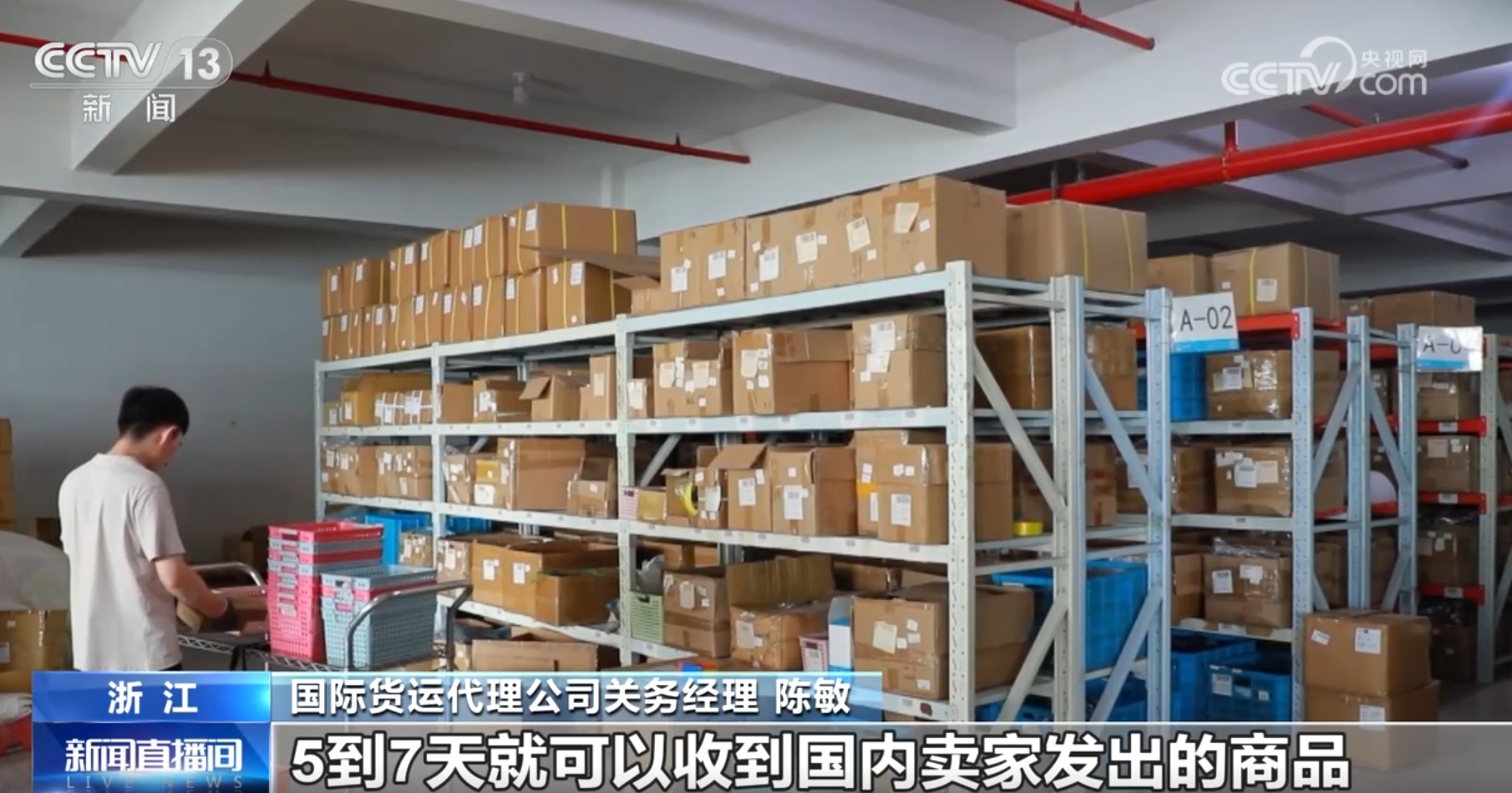
At present, the average daily export of cross-border e-commerce parcels by Hangzhou Bonded Logistics Center has exceeded 100,000. Hangzhou Xiaoshan International Airport, near the logistics center, has greatly improved the "capacity" and freight capacity of airport freight by opening the country’s first "multi-layer structure+intelligence" international cargo terminal and encrypting all freight routes. Up to now, Hangzhou Xiaoshan International Airport has opened a total of 27 all-cargo flights, of which 12 routes are "bound" to the top 25 airports in the world in terms of cargo and mail throughput, providing strong logistics support for cross-border e-commerce commodity exports in Zhejiang. At the end of July, Hangzhou Airport also opened an all-cargo flight from Hangzhou to Osaka, Japan, and the cross-border e-commerce products exported to Japan achieved "the next day".
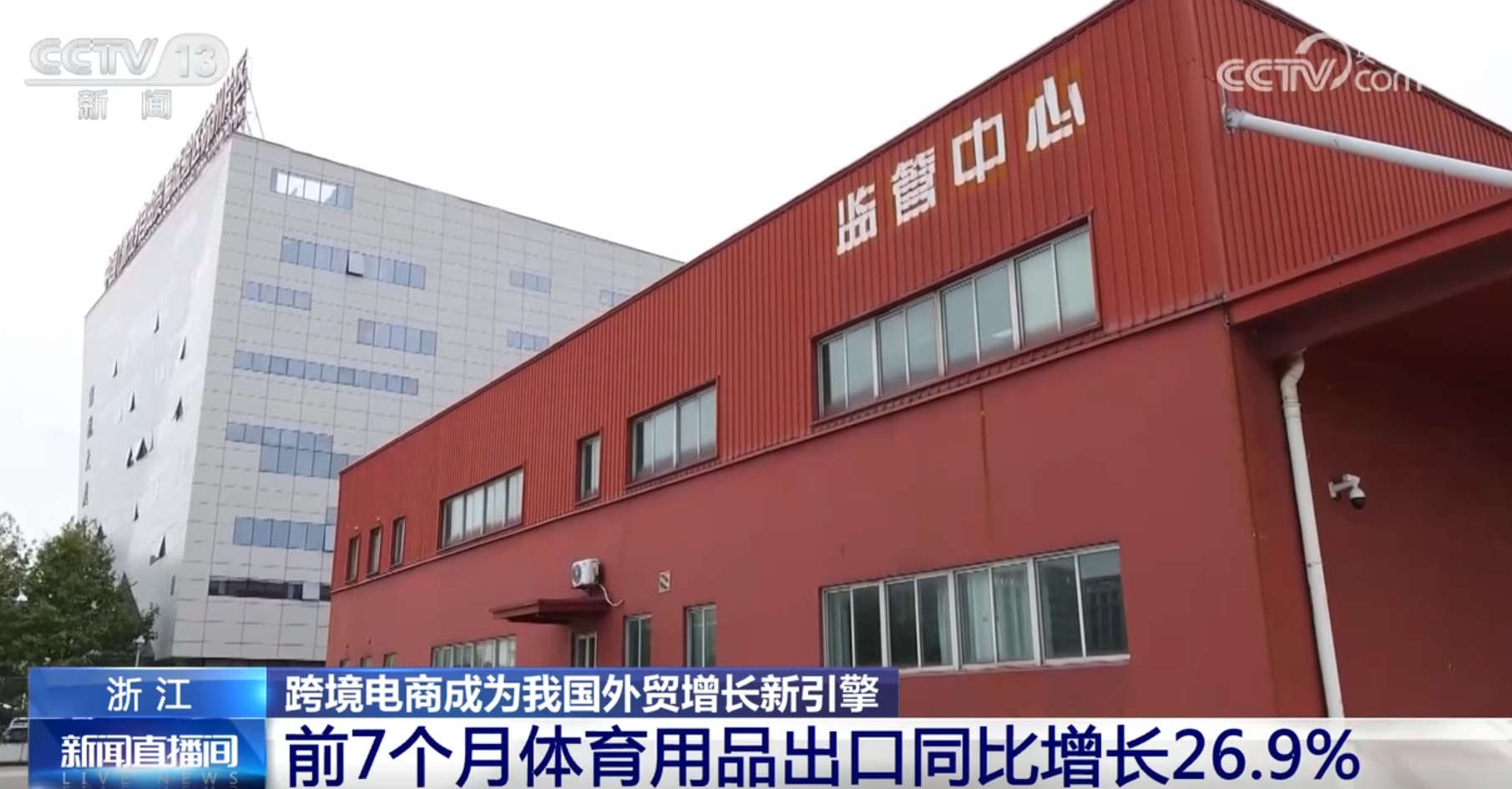
Bao Minwei, the second-level organizer of Hangzhou Xiaoshan Airport Customs Comprehensive Business Division II, which belongs to Hangzhou Customs, said: "We embed the customs supervision operation chain into the enterprise logistics operation chain, relying on the construction of smart customs, such as using some intelligent screen comparison, intelligent drawing review and intelligent sorting to further reduce the customs clearance time. 1-mdash this year; In July, the outbound freight volume of Hangzhou Airport reached 96,700 tons, up 53.7% year-on-year, of which the outbound freight volume of cross-border e-commerce reached 65,200 tons, accounting for nearly 70% of the total export freight volume of the airport port, showing ‘ E-commerce of freight ’ The characteristics of. "
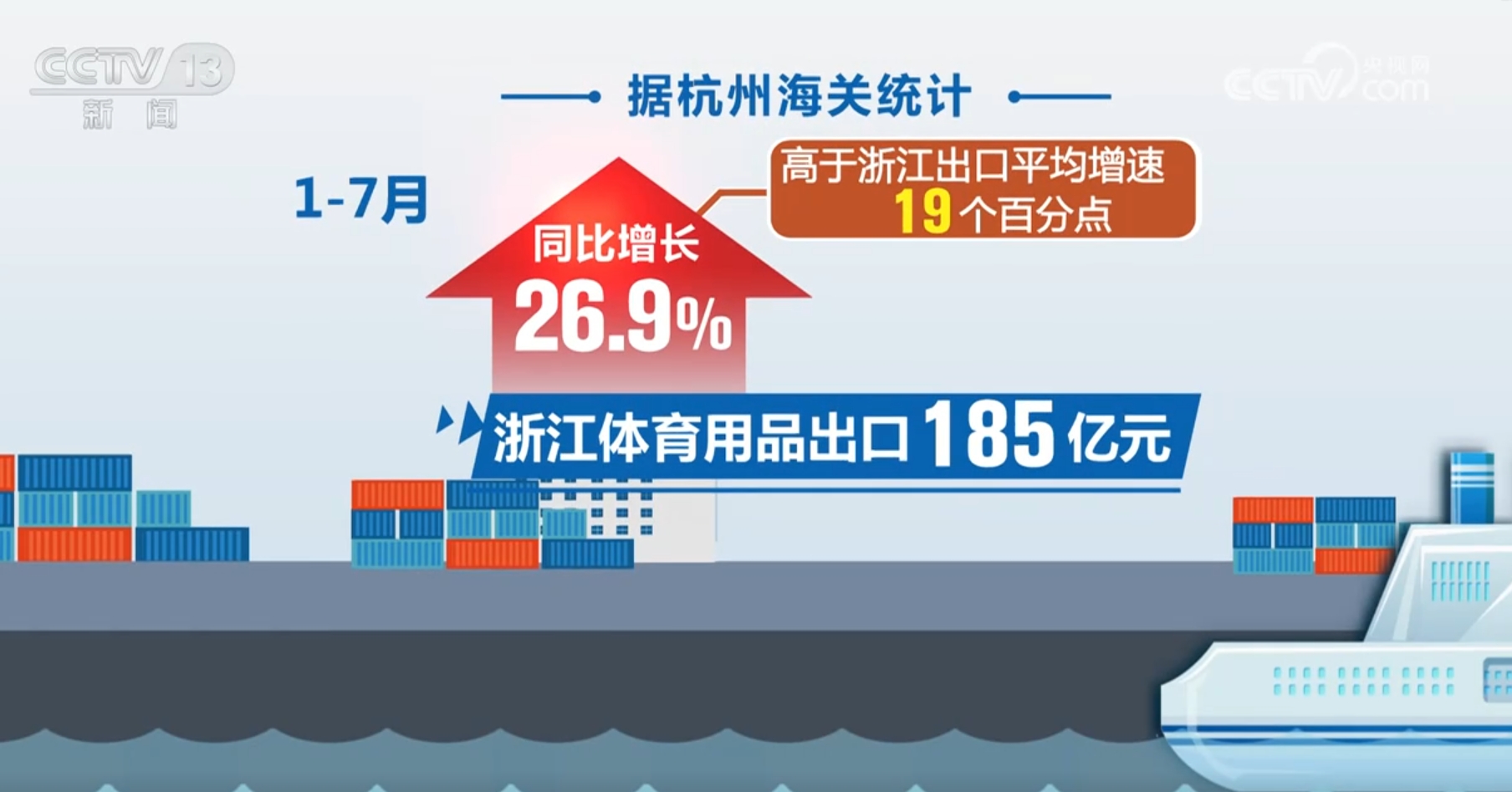
According to statistics of Hangzhou Customs, 1-mdash; In July, Zhejiang’s sporting goods exports reached 18.5 billion yuan, up 26.9% year-on-year, 19 percentage points higher than the average growth rate of Zhejiang’s exports, among which exports to France increased by 53.3%.